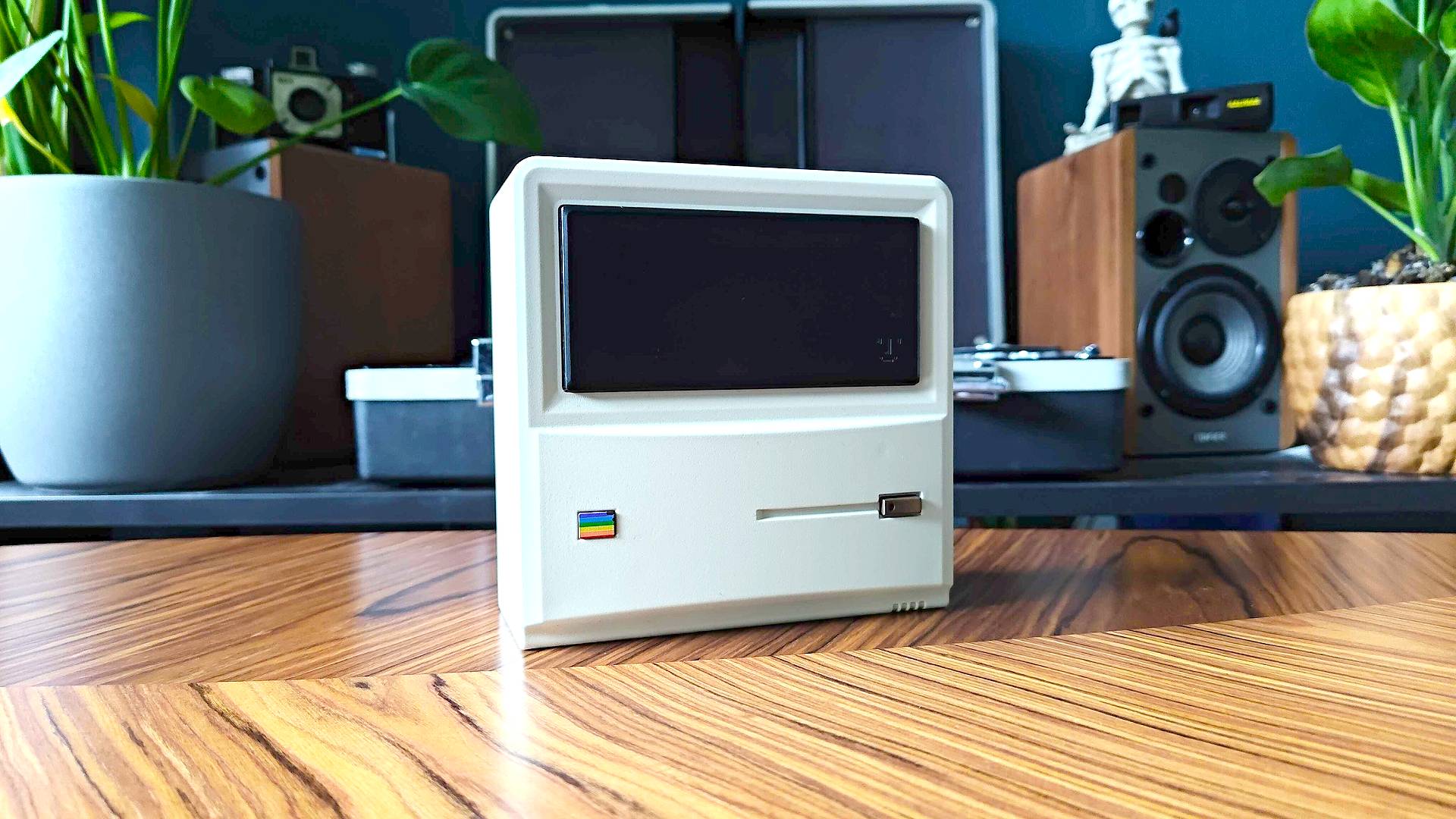GamesRadar+ Verdict
The Ayaneo Mini PC AM01 mighty micro machine that’ll happily provide you with access to lightweight new releases, Indie adventures, and emulated classics alike. Its older AMD Ryzen APU isn’t going to hold up against handhelds like the Steam Deck, but for less than many portable systems, you’ll end up with an excellent way to play a chunk of your Steam library that just also so happens to resemble an adorable, dinky Apple Macintosh.
Pros
- +
Incredibly compact
- +
Retro Mac design
- +
Surprisingly capable
Cons
- -
Uses older tech
- -
Only for lightweight gaming
Why you can trust GamesRadar+
I’ve tested quite a few compact rigs in my time, but the Ayaneo Mini PC AM01 brings me so much more joy than the others. It’s not even entirely due to the fact it looks like an Apple Mackintosh computer, nor is it thanks to its space-saving design. Ultimately, I think it’s the fact it nails its primary objective of delivering an excellent low-spec experience that caters directly to retro fans and indie gamers alike, all while coming in at a pretty respectable price.
With prices starting at just $149 for a barebones system, the Ayaneo Mini PC AM01 is without a doubt one of the best gaming PC options in the budget ring. Admittedly, the cheapest version features an even lower spec APU compared to the model I’ll be discussing, but it’s still hard not to be impressed at the prices on offer. That said, this lightweight system naturally comes with a few performance caveats, so keep that in mind while considering this rig for your own setup.
Ayaneo is better known for making best gaming handheld contenders, and you can technically achieve a similar experience using a Steam Deck dock. However, I’m a bit of a sucker for having hardware with dedicated uses in my house, and the idea of using the Mini PC AM01 exclusively for a quick retro fix pleases my brain. I even used it to kickstart my playthrough of Prince of Persia: The Lost Crown, which perhaps illustrates how versatile the micromachine actually is.
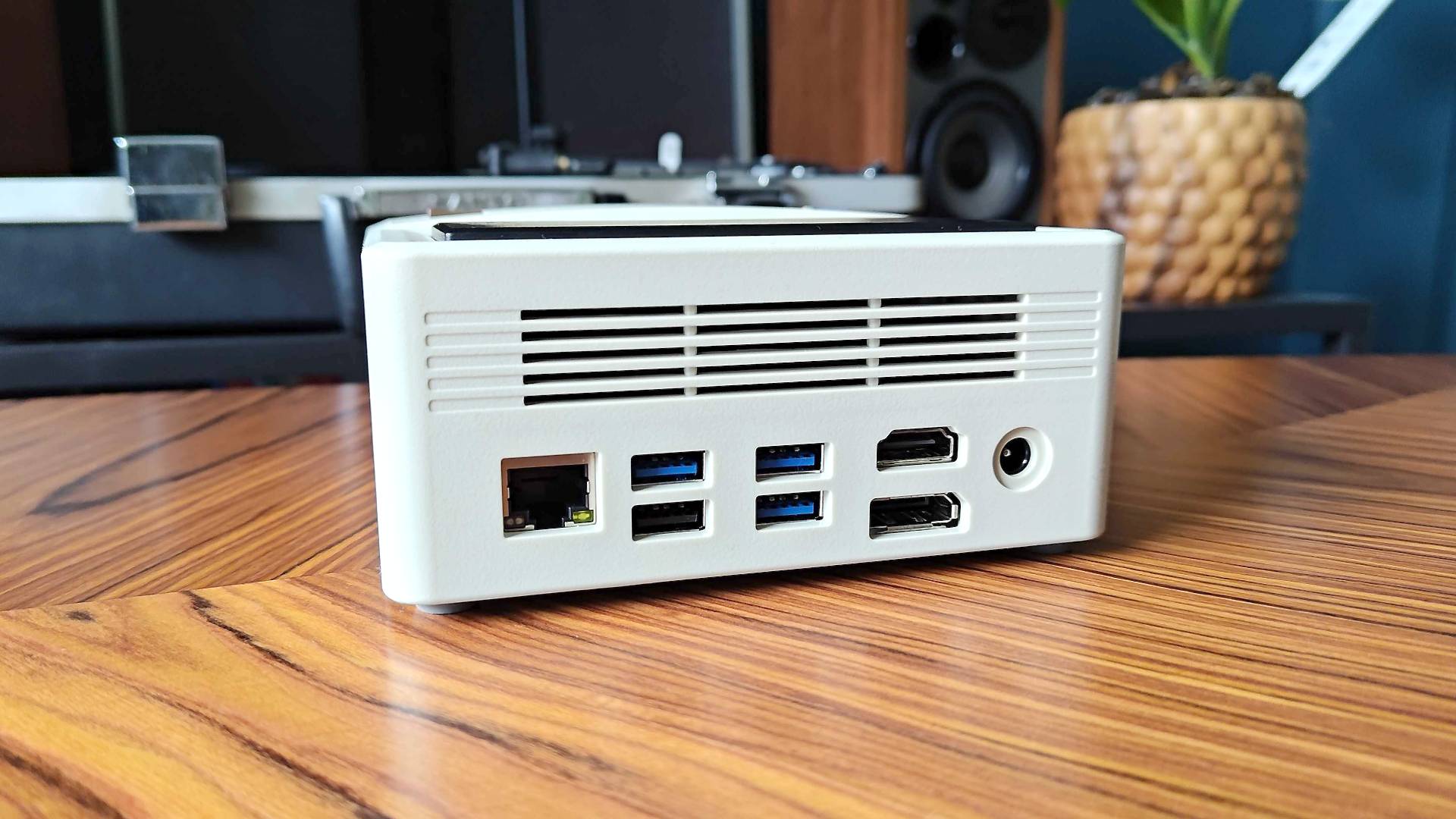
Specs
As I’ve already touched on, Ayaneo Mini PC AM01 specs are pretty lightweight on the APU front. It comes kitted out with either an AMD Ryzen 3 3200U or 7 5700U, both of which arrived three years ago. As a result, the system doesn’t quite pack the same punch as something like the Steam Deck, and that’ll understandably raise a few eyebrows. Part of me does wish this dinky rig was granted an RDNA 2 chip with a bit more oomph, but after some careful consideration and a bit of testing, I’m on board with Ayaneo’s choices.
| Price | $149 - $459 (£117 - £360) |
| APU | AMD Ryzen 3 3200U or 7 5700U |
| RAM | Up to 64GB DDR4 |
| Storage | Up to 2TB SSD |
| Audio | 3.5mm headphone jack |
| Operating system | Windows 11 Home |
The rest of the Mini PC AM01 is surprisingly beefy, with support for up to 64GB DDR4 RAM, a 2TB SSD, and even room for a 2.5-inch SATA drive. We’re talking about a system that’s smaller than the Nintendo Gamecube, so it’s needless to say this is a bit bananas. It doesn’t even skimp on ports to minimize its footprint, as it wields three USB-A 3.2 ports, an additional USB-A 2.0, HDMI 2.0, DisplayPort 1.4, and Ethernet round back.
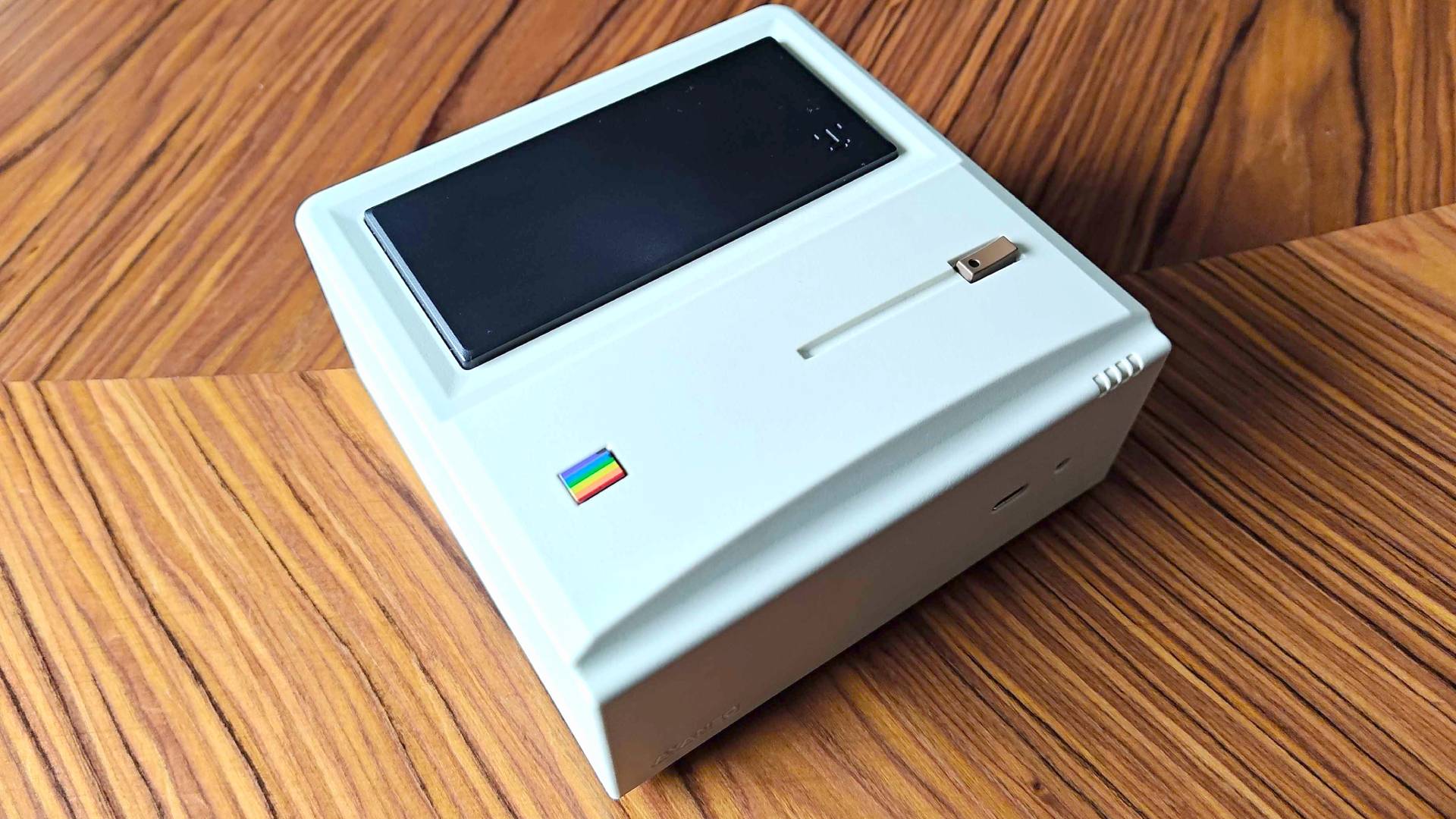
Design
It’s impossible to talk about the Ayaneo Mini PC AM01’s design without praising it for its unique Apple-inspired shell. The hardware scene doesn’t always get it right when it comes to paying homage to hardware history, but this tiny rig manages to strike a balance between fun and elegant. I’d argue it’s not going to look out of place next to your living room gaming TV, and its retro beige getup discretely delivers a visual blast from the past. That’s assuming you don’t have an old Packard Bell family PC in your spare room. If that’s you, ignore that last statement.
A tiny touch I probably appreciate far too much is the little rainbow magnetic logo on the top that can be swapped out. You’ll find three additional badges in the box, including one with Ayaneo’s logo in the center, one with a wee gamepad, and a pixelated A button, providing a barely noticeable degree of customization. Of course, you’ll also get a bunch of stickers to whack on the PC’s faux screen if that takes your fancy, but I reckon it looks better naked.
It’s worth noting that despite that pretend display on top, the Mini PC AM01’s rubber feet suggest it should be placed on its back. I’ve no reason to believe you can’t prop it upright if you prefer, but you’ll block access to the front USB-C port and headphone jack if you do so. You’ll also need some right-angled connectors if you want to prevent it from looking like a weird techno medusa, as the IO will be firing upwards in that position.
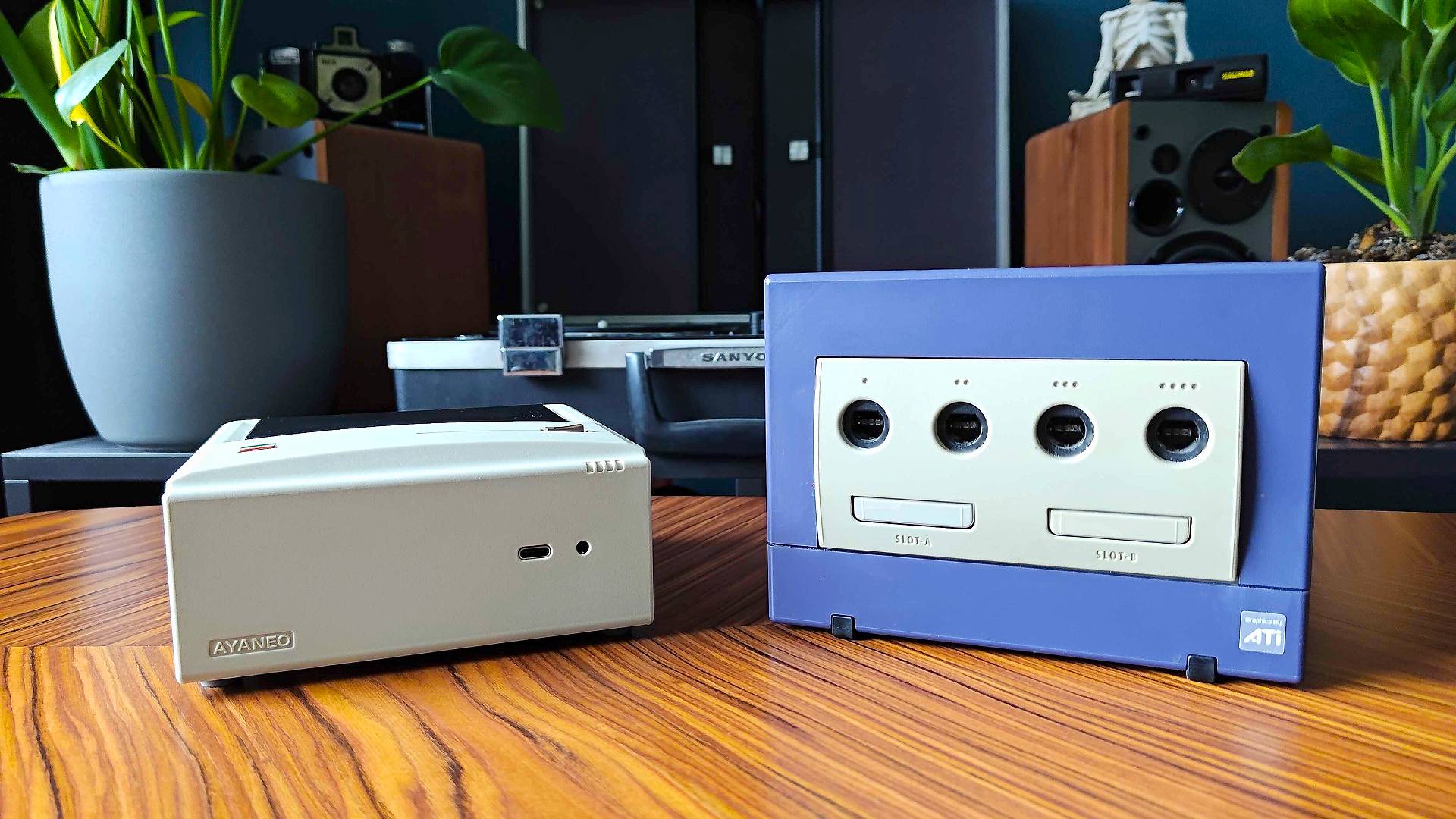
I mentioned above that the AM01 is smaller than the Gamecube, and there's a good reason my mind jumped to that comparison. Its incredibly compact design honestly got me reminiscing about the days of chucking Nintendo's console into a backpack and venturing out to friend's houses or anywhere with access to a TV. If I wasn't a mid-30s goblin who understandably doesn't have sleepovers anymore, this system would absolutely spend a lot of time in my backpack.
Cute aesthetic traits aside, the Mini PC AM01 packs a 35W high-pressure turbo fan into its incredibly small shell. It’s hard to believe there’s any active cooling at all going on within, especially since it seemingly didn’t force Ayaneo’s vision to make it look like a dinky Mac. Yet, it’s definitely crammed in there alongside various other components, and it manages to keep everything respectably cool under load. Don’t get me wrong, you’ll know when the fans are whirling up at full speed, but it’s quieter than my old Xbox 360 Slim that still resides in my setup.
Unlike handhelds (looking at you, Steam Deck) and other pieces of dinky hardware, Ayaneo actively encourages you to crack open the Mini PC AM01. There are only four Philips screws keeping you from the rig’s guts, and there’s a surprising amount of room to work with inside. I’m not saying those of you out there who haven’t ever upgraded a PC will feel 100% comfortable diving in, but the innards are designed to be accessible, not to mention there’s a chonky manual in the box that’ll break down the whole process for you.
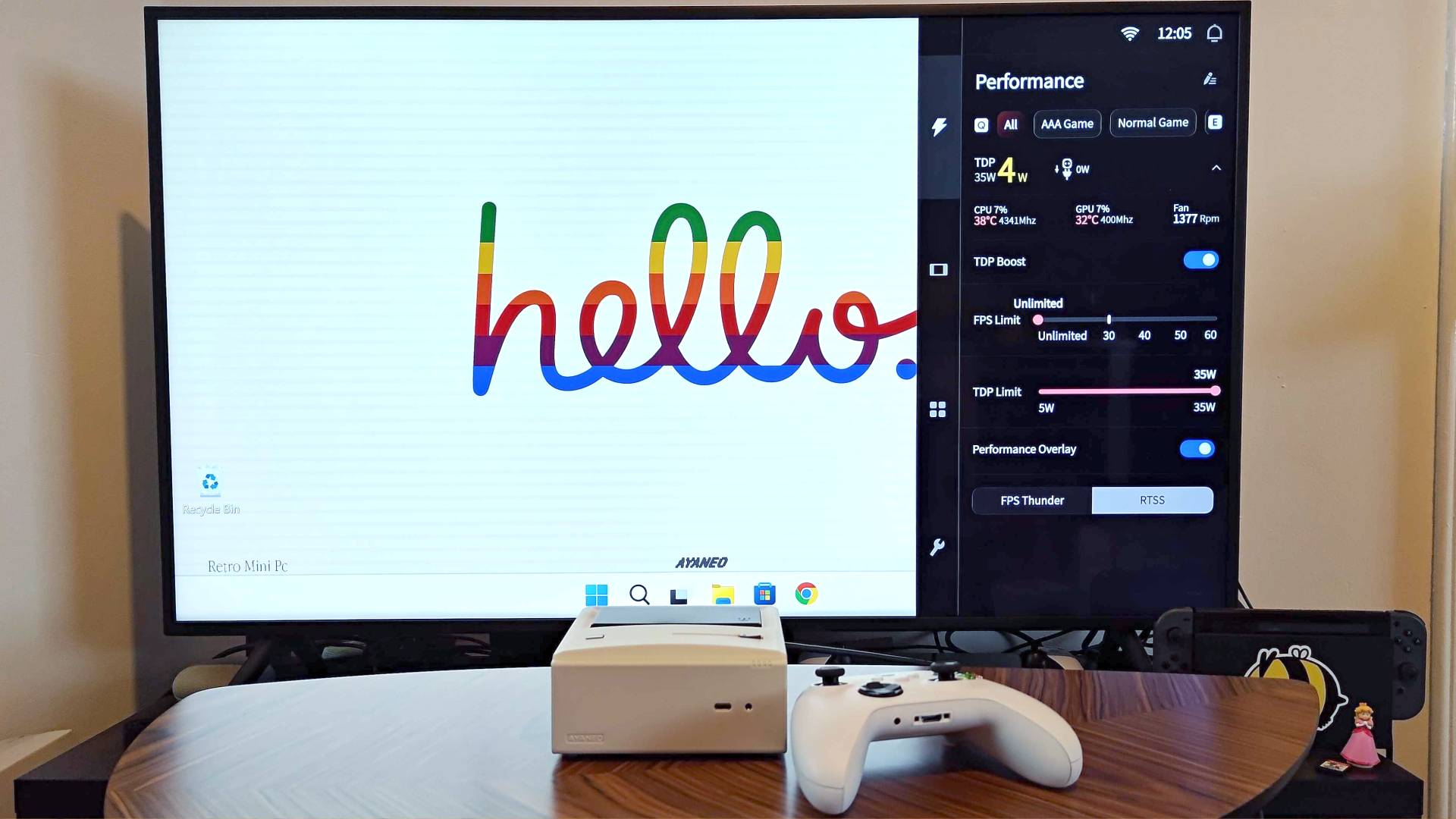
Features
Being a full Windows 11 PC, the Ayaneo Mini PC AM01 packs the same features your full-sized rig has into a lightweight package. That same principle applies to every compact system out there, making it anything but a unique trait. Still, you’ll be able to technically run any program, app, or game a conventional computer can, albeit at the mercy of system requirements and the usual performance shenanigans.
Just like the Ayaneo 2S, the Mini PC AM01 comes with Ayaspace pre-installed. The company’s “management space” normally acts as a helpful bridge to settings for handheld users, but it’s also great for managing things like fan speed, TDP, and performance profiles. It’s a little rough around the edges, and I’d still rather head straight to storefronts like Steam than use its automatic library. However, a lot has changed since the app made its debut, and Ayaspace 2.0 feels a lot more robust than some options out there, like the software included on the Lenovo Legion Go (coincidentally also called LegionSpace).
Without Ayaspace, using the Mini PC AM01 with a controller and a TV would feel just as cumbersome as an ordinary rig. I still tend to keep a Logitech K400 Plus to hand, as I usually end up mucking around with games that require light fixes to run on Windows 11, but you could get by using mouse emulation with a gamepad. I’m never not going to long for the slick navigable menus and options provided by SteamOS, and Ayaneo hasn’t quite cracked creating a similar experience yet. Nevertheless, I think the handheld maker is close to turning Ayaspace into an exceptional Windows-based rival, so watch this space.

Performance
No, you can’t run Cyberpunk 2077 on the Ayaneo Mini PC AM01. Well, I mean, you can try, but you’ll end up with something that runs at 17fps and looks like a PS2 game. That misadventure aside, the Ryzen APU inside the rig is more capable than you’d think, especially when it comes to classic PC games, emulation, and even lighter-weight new releases.
For the most part, I stuck with 1080p when running anything newer than 2010 on the AM01. I definitely had a little bit of frame rate wiggle room to play with in some adventures, especially those that are already well-optimized to run on mobile hardware. Yet, sticking with good old ‘Full HD’ became a key part of zoning out from my usual FPS-taunted thoughts and just focusing on the experience at hand, something I reckon is crucial in regards to enjoying low-spec gaming.
For a change, I won’t be using my usual suite of benchmark games for this review, as that feels sort of mean-spirited. Instead, I picked two new releases, namely Prince of Persia: The Lost Crown and Sonic Superstars, as examples of contemporary releases to mix in with some classics. The fact these two outings are 2D with some three-dimensional elements should help test whether it can tip its toes in the modern realm of PC gaming, or whether it’s pigeonholed to explore the past.
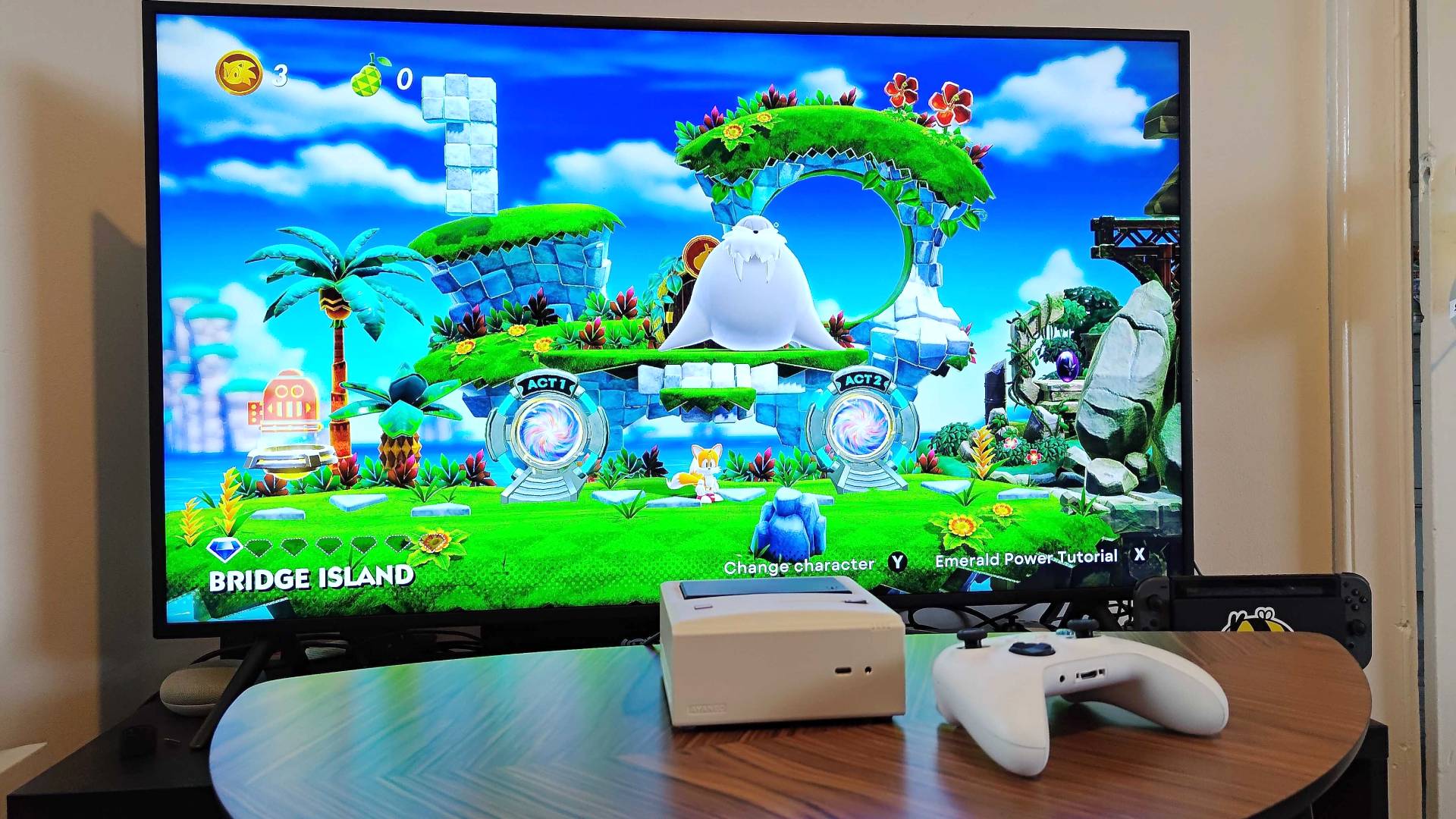
Frankly, I think the benchmarks speak for themselves, and I honestly didn’t have playing The Lost Crown using a mini PC on my 2024 bingo card. Hitting over 60fps isn’t a fluke caused by any frame rate spikes either, as I was able to consistently stay above the line throughout my current playthrough. The lowest count I witnessed with my own eyeballs was around 56fps, and even at that, it was momentary.
The same applies to Sonic Superstars, the latest Sega romp that I honestly thought would be too taxing at 1080p. And yet, it ran at an average of over 60fps for the most part, and would regularly end up in the high 70s throughout some sections. Keep in mind that the Nintendo Switch version uses 720p even in docked mode, and the Mini PC AM01 ultimate produces better visuals.
Rolling onto some additional PC games that should have no issue running fast by default, I decided to dive back into the murky world of Dishonored. I was slightly disappointed in the results since I couldn’t quite maintain a 60fps average, but honestly, skulking around as Corvo still feels pretty nice at 1080p. Though, that could be down to the fact I played the 360 version at 30fps.

I’ve been on a bit of a Tomb Raider kick thanks to the upcoming news of a remastered Trilogy, leading me to install every outing pre-reboot. The older DOS-era games ran like butter, and while that’s not that surprising, playing through Lara's big debut in 4K using an Xbox controller without booting up my desktop PC feels glorious. The newer entries to the series, Anniversary and Legend, run pretty well too, running at around 70fps with everything cranked up full.
Rounding things off with emulation, and it’s safe to say the AM01 is well up to the task. From Shadow of the Colossus on PS2 to Rogue Squadron II on Gamecube, I had no issue running staple platforms at a UHD resolution and maintaining full speed. I was even able to get a chunk of my Wii U library running on the mini PC, which I honestly didn’t think would pan out as well as it did. That’s pretty much where the buck stops, though, and that’s perfectly understandable.
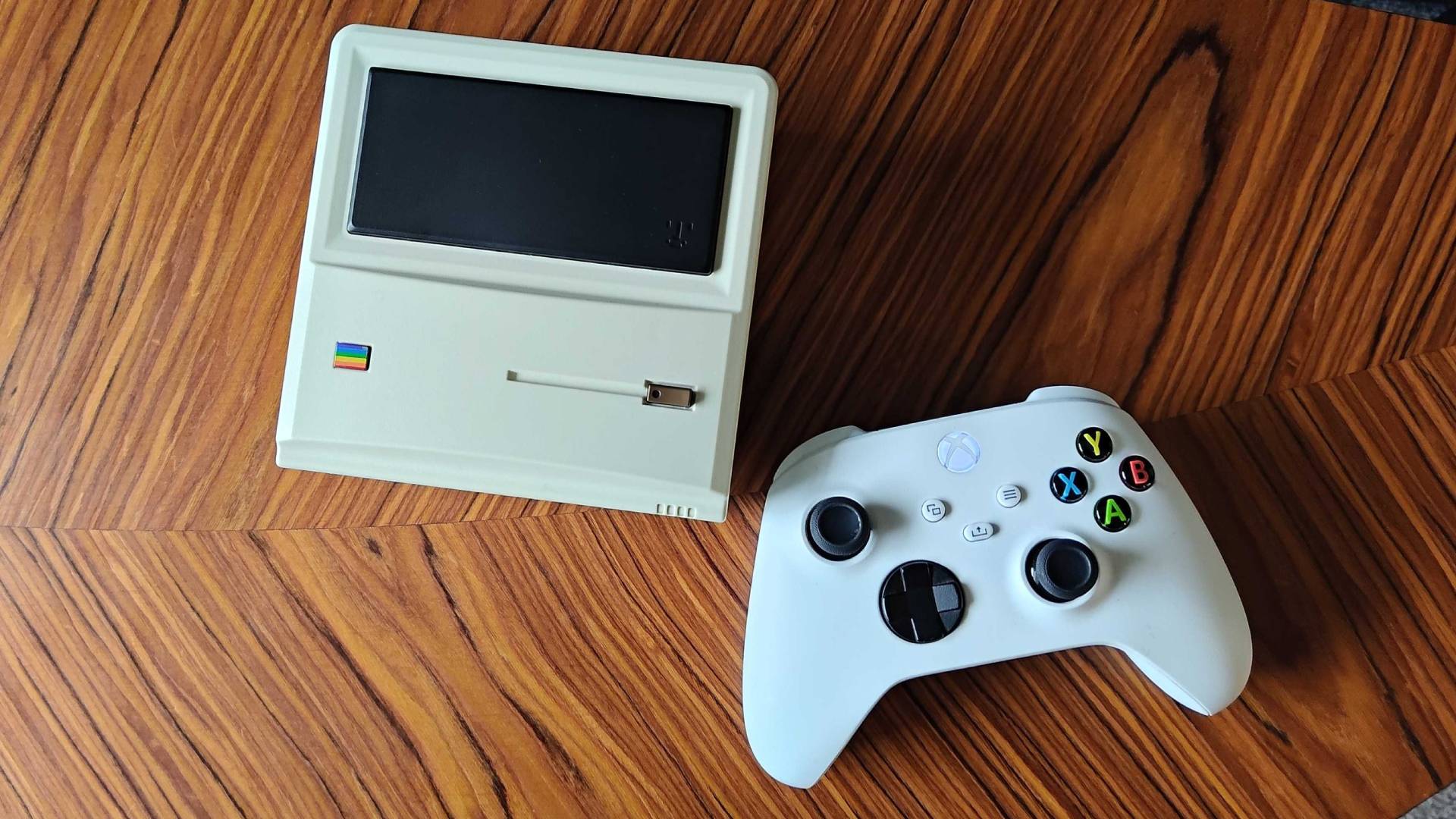
Should you buy the Ayaneo Mini PC AM01?
If you’re a sucker for all things retro, and just happen to need a tiny affordable rig, the Ayaneo Mini PC AM01 should be top of your list. It’s not going to replace your PS5 or Xbox Series X, nor is it designed to handle big blockbusters with any grace. What it will do is make short work of lightweight new releases, indie adventures, and plenty of classic capers, all while looking like an artistic tribute to the humble beginning of PC gaming.
Fancy splashing out on something with more of a kick? Watch out for our Ayaneo Mini AM02 review, as this system’s NES-inspired sibling might be exactly what you’re looking for.
How I tested the Ayaneo Mini PC AM01?
Over the course of a month, I used the Ayaneo Mini PC AM01 as a way to play PC games in my living room. During that time, I revisited various PC classics like Tomb Raider and newer releases like Prince of Persia: The Lost Crown and Sonic Superstars to tests the system's capabilities. I also loaded up a few of my physical games into Windows 11 emulators like PCSX2 to see how it handles specific consoles.
For more information how we test gizmos, gadgets, consoles, and PCs, swing by our GamesRadar+ Hardware Policy for a deeper look.
Looking for something Nintendo flavored? Check out the best Nintendo Switch bundles for handhelds that'll run some of gaming's greatest franchises. Alternatively, swing by the best gaming laptops for rigs you can take on the go.

Phil is the Hardware Editor at GamesRadar and joined the team in 2023. In the past, they've also contributed to the likes of TechRadar, The Daily Star, the BBC, and PCGamesN, but these days, they specialize in testing the latest gaming handhelds, monitors, TVs, and PC components. They're also extremely nerdy about retro consoles and playing the classics on both new and old systems.
